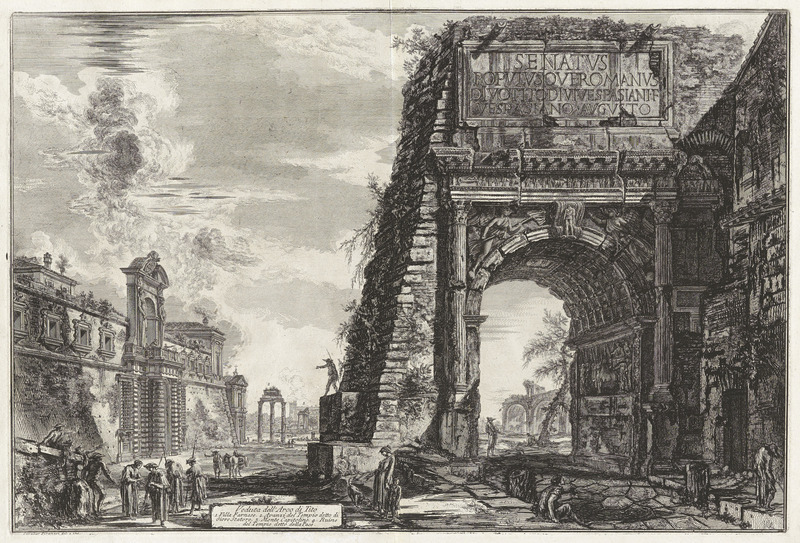18th Century
Piranesi’s etching of the Arch for Titus (1771) illustrates the monument as it appeared in the 18th century. In his image, Piranesi depicts a stone building on the right side of the arch, and a buttress overgrown with weeds on its left, both later additions to the monument. These two structures are also present in early nineteenth-century representations of the arch produced by artists John Vanderlyn and Luigi Rossini. In the background, Piranesi illustrates a modern palace and the ruins of the Roman forum.
Piranesi does portray many of the arch’s surviving ancient features. On the arch’s facade, he includes the personification of Roma on top of the keystone and the figures of Victory within the spandrels. Piranesi also delineates the Senate’s dedicatory inscription,and two of the façade's four composite columns. In the monument's passageway, it is possible to make out the presence of the original coffers on the inside of the arch’s curve and the triumphal relief sculptures.
